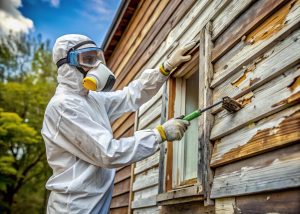Statewide childhood lead testing planned
By Tim Alexander For Chronicle Media — July 30, 2025
The most common source of lead poisoning is dust from lead-based paint that has deteriorated or been disturbed while remodeling.
Nearly 13 percent of the 1,350 Illinois ZIP codes at high risk of lead exposure in children are in Cook County.
The 172 Cook County areas at high risk of lead exposure in children include all 67 ZIP codes that begin with 606. That includes the Chicago Loop, South Loop, Near East, Near South, Near West, Lower West, Near North, Northwest, and Southeast sides, and include the Beverly, River North, Bridgeport, Gold Coast, Magnificent Mile, Ukrainian Village, Lakeview, Lincoln Park, South Chicago, Roscoe Village, Englewood, Bucktown, Little Village, West Garfield Park, Albany Park, Rogers Park, Pullman, Chicago Lawn, Jefferson Park, Edison Park, Hyde Park, Garfield Ridge, Belmont Cragin, Uptown, Portage Park, Austin, West Ridge, South Shore, Humboldt Park, Ashburn, Bronzeville, Norwood Park, Edgewater, and Randolph Market neighborhoods of Chicago.
Lead exposure can lead to damage to the brain and nervous system, slowed growth, developmental, behavioral and learning difficulties, the Illinois Department of Public Health warns.
IDPH moved closer toward its goal of full-state implementation of childhood lead testing in 2026 by adding more ZIP codes to its list of high-risk areas for childhood lead exposure, bringing the total to 1,350 locations in 47 Illinois counties.
“This latest expansion of the lead-testing list brings us closer to achieving the ambitious goal of universal statewide testing,” IDPH Director Dr. Sameer Vohra said. “There is no safe level of lead in the blood.
“Early detection and intervention are critical tools to help protect Illinois’ kids from the serious health and developmental challenges caused from lead exposure.”
Information on lead exposure can be found at https://dph.illinois.gov/topics-services/environmental-health-protection/lead-poisoning-prevention.html.
Under Illinois law, any child residing in what is deemed a high-risk ZIP code is to be tested automatically at 12 and 24 months. For children 6 years of age and younger, assessments for lead exposure through the use of a questionnaire administered by a health care provider are provided.
A listing of pediatric lead exposure high-risk ZIP codes in Illinois may be found at: https://dph.illinois.gov/topics-services/environmental-health-protection/lead-poisoning-prevention/families-of-lead-exposed-children/pediatric-highrisk-ZIP-codes.html.
Children who fall into other risk categories are also tested.
Blood tests that come back with lead levels more than 3.5 micrograms per deciliter require a public health intervention per Illinois law. This can include a home inspection to determine the source of the lead contamination. When lead is found, a state-approved inspector works with the homeowner to remove the sources of lead. A public health nurse may also visit and educate the family on ways to protect children from the harmful effects of lead.
In Peoria County, 1-in-20 children tested have a high lead level, which is several times the national average and one of the highest rates in Illinois. The Peoria City-County Health Department fully supports universal childhood lead testing regardless of ZIP code, according to Ryan Janson, Peoria County’s lead-safe program coordinator.
The Peoria City-County Health Department is welcoming the Illinois Department of Public Health’s goal of full-state implementation of childhood lead testing.
The agency acts as a delegate agency for the Illinois Department of Public Health for investigations in Peoria County.
“Lead risk assessors from the PCCHD conduct investigations to determine the source of the lead contamination and how this hazard can be mitigated. Additionally, the PCCHD Clinical Services team works with the family to gather information on possible sources of contamination and educate them on ways to avoid lead exposure,” PCCHD’s Janson said. “Although we work in any ZIP code where a child may have an elevated blood lead level, our most affected ZIP codes are 61603, 61604, 61605 and 61606.”
Those ZIP codes are located in Peoria’s warehouse-south end district and are among the poorest neighborhoods in Peoria County. Home to more than 72,000 residents, the ZIP codes also contain some of the city of Peoria’s oldest and most decaying homes and infrastructure.
Peoria’s 61605 ZIP code is one of the 100 poorest in the United States, according to census data.
Pediatric lead screenings are offered for free in Peoria County. Contact your child’s doctor or call the Peoria City-County Health Department at 309-679-6655 to schedule a lead screening.
The PCCHD recommends children be tested for lead poisoning at 9-12 months of age, and again at 18-24 months of age. At-risk children should be tested until at least 6 years of age.
Peoria County also offers a Lead Hazard Removal Program.
Funding is available for lead hazard (lead paint) removal on homes and rentals. Homes built prior to 1978 are eligible for the Lead Hazard Removal Program for replacement of windows, doors or siding that contains lead paint. Priority is given to homes with a pregnant woman or a home with a child who tested positive for lead.
For information on the Lead Hazard Removal Program, call 309-679-6120 or visit https://www.pcchd.org/156/Lead-Safe-Homes-Programs.
Both Chicago and Cook County have programs to fix lead paint issues and other health hazards in homes. The Cook County program is for homes in suburban Cook.
To see eligibility requirements for the Cook County program, go to https://cookcountypublichealth.org/environmental-health/lead-poisoning/grant/.
For information on Chicago’s program, including eligibility requirements, go to https://www.chicago.gov/city/en/depts/cdph/provdrs/healthy_families/svcs/lead-poisoning-prevention.html.
Lead-poisoning facts
· Lead is a heavy metal that does not degrade over time.
· There are no benefits to having lead in the human body.
· A normal lead level is 0.0.
· The amount of lead needed to poison our system is 1/100th of a sugar packet.
· Lead poisoning is a silent disease. Even children who appear healthy can have dangerous levels of lead in their bodies.
· Most homes built before 1978 contain lead-based paint.
· The most common source of lead poisoning is dust from lead-based paint that has deteriorated or been disturbed while remodeling.
Kevin Beese contributed to this report.






